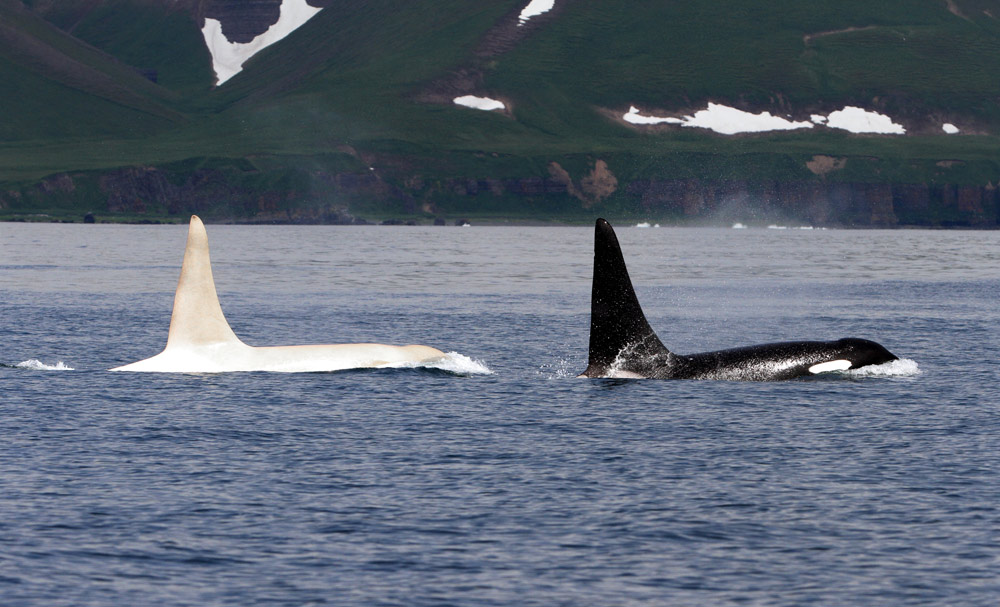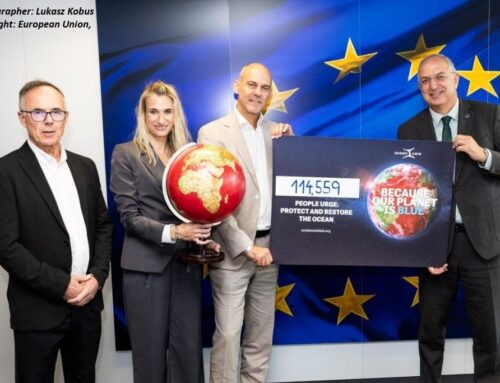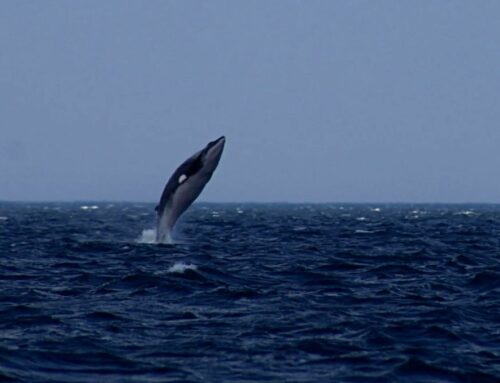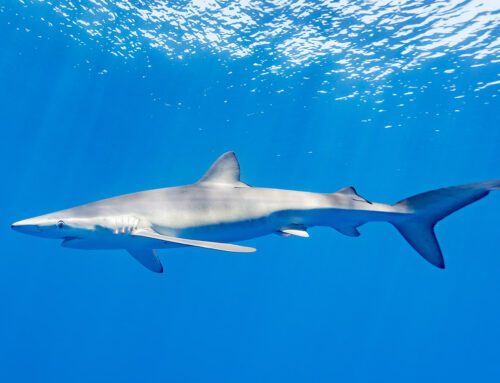In 2012, reports on the sighting of an all-white adult male orca caused a huge media response worldwide. Now this orca, called „Iceberg“, has been sighted again. Moreover, the scientists found a total of at least five all-white orcas. The report on their findings in today’s (Sept. 1st, 2016) issue of the scientific magazine Aquatic Mammals.
HIGHEST KNOWN INCIDENCE OF All-WHITE KILLER WHALES IDENTIFIED IN RUSSIAN WATERS
News Release — 1 Sept. 2016
In spring 2012, the sightings of a beautiful all-white mature male killer whale named Iceberg were widely celebrated in worldwide press coverage. Iceberg has now been seen again in the waters of the Russian Far East, after years of searching.
“He’s alive and healthy, still travelling with his family of 13 orcas,” says Erich Hoyt, Whale and Dolphin Conservation (WDC) research fellow and co-director of the Far East Russia Orca Project (FEROP). “We think he is at least 22 years old now — middle age for a male orca.”
But Iceberg is not the only all-white orca that the FEROP team have been seeing.
In a scientific paper in Aquatic Mammals published today, the FEROP team reports finding at least five white orcas, and perhaps as many as eight, in Russian North Pacific waters. These orcas are from different pods, comprising males, females and calves, except for one example of a white mother travelling with a white juvenile, presumably her offspring. Russian waters carry the highest known incidence of white killer whales in the world with a ratio of about 1 white individual in 1,000. By comparison, in Antarctica, location of the largest killer whale populations in the world, no white orcas have ever been seen. Overall, in mammals, white individuals turn up at a rate of 1 in 10,000, while Western European humans have a rate of 1 in 20,000.
“Killer whale populations all over the world are relatively small and have been shown to have low genetic diversity,” says Hoyt. “So the high rate of white individuals, who are probably true albinos but may be leucistic, is not surprising. In terms of management, this highlights how vulnerable killer whales are not only to environmental and human-caused factors but also to the internal mutation load which can become a significant threat in small inbred populations.”
“Such findings and extraordinarily rare sightings remind us of the importance of protecting these amazing marine mammals,” says Nicolas Entrup, consultant to OceanCare, an international marine conservation organisation. “The efforts by a team of young Russian scientists need to be congratulated, as they not only contribute to research, but promote the concept of protected areas in Russian waters despite growing pressure from amusement parks to continue capturing orcas in this region.”
Since 2012, at least 16 killer whales have been captured and removed from their families in Russian waters.
Working along the Kamchatka coast, in the northern Kuril Islands and in the offshore Commander Islands since 2000, FEROP has obtained individual IDs for more than 1,500 orcas, following their lives from year to year. The team has made important findings on the evolution of killer whale dialects and the use of various sounds for short and long-range communication, logged important sightings of rare North Pacific right whale and collaborated in the discovery of a new species of beaked whale.
For more information, contact:
Nicolas Entrup, Consultant to OceanCare, T. +43 660 211 9963, E-Mail: n.entrup@shiftingvalues.com
Erich Hoyt, Research Fellow, Whale and Dolphin Conservation and Founder-Co-Director, Far East Russia Orca Project (FEROP), email: erich.hoyt@mac.com
FB: https://www.facebook.com/russianorca
Web: www.russianorca.com
The Far East Russia Orca Project (FEROP) is supported by Whale and Dolphin Conservation (WDC), Animal Welfare Institute (AWI), Humane Society International (HSI) and OceanCare.
Fotocredit: Far East Orca Project (Ferrop, WDC)








